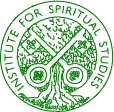
|
|
Meaning of Transfiguration |
Seminar delivered by Professor Dorothy Lee on August 5, 2006The Transfiguration has been neglected in Western Christianity, asserted Dorothy Lee, Professor in New Testament at the United Faculty of Theology, when in fact it is central to the religion in terms of theology and spirituality. The story occurs in the middle of the Gospels, at the midpoint when Jesus intends to go to Jerusalem and to his Passion. It is after these declarations are made that the Transfiguration occurs. In the three synoptic Gospels there is a threefold description – ascent, revelation, descent – that is the basic pattern of the story. For some, the Transfiguration is an apocalyptic story, i.e. is about the future and the last days. For others it is an epiphany, a revelation of God, i.e. it is about Jesus' identity. Dorothy argued that both genres, apocalyptic and epiphanic, are in play. Mountains are numinous places of revelation in the ancient world. To be transfigured is to be metamorphosed, as the Greeks say; there is a change in form. Christ's light in his transfiguration is not a humanly-made or natural white, nor is it the light of the sun. It is a divine light, seen on a mountain, on what the ancients thought of as the boundary between earth and heaven, 'the suburbs' of heaven. Jesus is seen with Moses and Elijah, both figures associated with mountains, with relationships with God. Jesus is in communion with heavenly beings. Moses is a figure of the law and of revelation, Elijah is a prophet of the end, an apocalyptic figure. When Peter witnesses the Transfiguration he misunderstands, he sees things in human ways. He wants to bypass the suffering of the Passion and only have the glory, but there is no glory without suffering. Spirit is associated with the cloud. The apostles are called to listen, and to go on listening. Transfiguration can only be understood in terms of the passion, death, and resurrection of 'the Son of Man': Christ in Glory. Dorothy then took us through the variations to the story. It is important, she said, to hear different Gospel accounts in their own right, and not as a composite. We need to read each writer's perspective individually. In Luke, for example, we find that he is freer in his use of Mark's Gospel than Matthew. Luke avoids the language of transfiguration. He lays great emphasis on prayer, the Transfiguration itself happening in prayer. Luke speaks of His 'departure', which He was about to fulfil in Jerusalem, 'departure' here meaning the same thing as exodus. And Luke speaks of how the apostles were overwhelmed and awed into silence by the event. This is the terror of the Holy, or fear of the Lord, a state that has been downplayed or just ignored since the Enlightenment, but which is a learning experience of the spiritual life and needs to be rediscovered. What is the story about? It reveals who Jesus Christ is, i.e. who God is. He is more important than Moses and Elijah, something often demonstrated in icons of the Transfiguration. He lives in both realms – heaven and earth – and is the bridge between the two. He is the full identity of God. The revelation, or epiphany, of Christ bridges the human and the divine. The story is about our transfiguration, who we will be. Who he is, we will become. This is sometimes called theodosis or divinization of self, what in Protestant tradition is called sanctification. He restores our humanity. God shows us how to be human. It is the mending of creation. The Day of the Transfiguration is the same day as Hiroshima Day, and Dorothy observed that transfiguration talks about disfigurement, both of creation and of the human.
This site is hosted by St Peter's Eastern Hill,
Melbourne, Australia. |